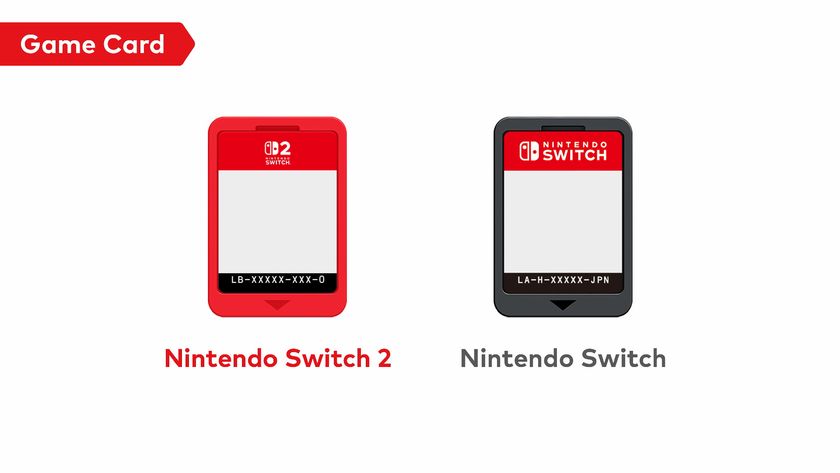Microsoft has made a big deal about Xbox One X being "the most powerful console ever" what with its 6 teraflops of processing power. But when all is said and done, is X really going to be the most powerful console we've ever seen?
- The Xbox One X - 11 things you need to know for launch
- Xbox One X guide: how to capture and share 4K and HD game video
The short answer: yeah, probably. Xbox One X's specs mean the capability for sharper textures, more complex models, faster load times, and a snappier OS. Whether - and how - that will be used is up to developers.
The longer, much more fun answer: allow me to explain with a head-to-head of Xbox One X vs. the competition.
What's in a flop?
First, the answer to "what is a teraflop?" Well, "flop" is short for "floating operation per second," and "tera" means trillion, so one teraflop represents one trillion floating operations per second. As for flops themselves, it's just a way of crunching numbers to determine how quickly a computer can handle the tasks thrown at it (which, in the case of a gaming console, would largely revolve around rendering and physics simulations).
Think of flops like the horsepower rating of a car: if a car has a rating of 300hp, it could be said to have a better engine than a car with a rating of 100hp. In the same way, a console with a rating of 6 teraflops has a better processor than a console with a rating of 2 teraflops.
So now that we know what we're measuring, how does Xbox One X stack up? Take a look for yourself:

The power of consoles has grown so much over the past few generations that anything pre-dating the original Xbox doesn't show up on the scale. Even when we take out the current generation, some of our most beloved consoles barely register as a blip:
Sign up to the GamesRadar+ Newsletter
Weekly digests, tales from the communities you love, and more

All told, that's:
- N64: 100 megaflops
- PlayStation: 100 megaflops
- PS2: 6,200 megaflops
- GameCube: 9,400 megaflops
- Xbox: 20,000 megaflops
- Xbox 360: 240,000 megaflops
- PS3: 230,000 megaflops
- Wii: 12,000 megaflops
- Wii U: 352,000 megaflops
- PS4: 1,843,000 megaflops
- Xbox One: 1,310,000 megaflops
- Xbox One S: 1,400,000 megaflops
- PS4 Pro: 4,200,000 megaflops
- Xbox One X: 6,000,000 megaflops
In terms of raw power, it's obvious: Xbox One X outshines all of its current competition, and blows previous generations out of the water. "But wait!" you say. "Some of these numbers don't make sense. The Xbox 360 and Wii U are more powerful than a PS3?"
And now you see why comparing teraflops alone isn't necessarily a good measure of performance. To go back to the car analogy, a Prius would likely beat a semi truck in a race even though it has less horsepower, because it doesn't have to push as much weight. There are a lot more factors to consider here.
The Xbox One X guts
Modern gaming consoles run on four primary components: a central processing unit (CPU), a graphics processing unit (GPU), a storage unit (hard drive or flash drive), and random access memory (RAM). I'm gonna break this down into super simplified terms to make it easy to understand, so we're going to lose a bit of the technical nuance. Commenters, feel free to make addendums to what I'm about to say.
The CPU is the nervous system of the computer: it tells which pieces to do what and how fast. The GPU is the muscles: it does the heavy-lifting and makes everything look good. The hard drive is like a storage box: the bigger the box, the more stuff you can put in it. RAM is the number of hands pulling things out of that box: the more hands, the faster you can sort and pull out what you want.
We already know Xbox One X's GPU is capable of 6 teraflops and what that means. So how does Xbox One X's CPU, storage, and RAM compare?

Xbox One X has eight CPU cores, each running at 2.3 GHz. The closest in competition is the PS4 Pro, which also has eight CPU cores, though they're running at a slightly slower 2.1 GHz. The big thing to notice here is the jump between first-generation Xbox One consoles and Scorpio. That's nearly a ⅓ increase in speed, meaning faster switching between processes.
In other words, every time your Xbox One X CPU issues a command (like "display this image" or "load this program") it has the capacity to do so 30% faster than your Xbox One. Whether it actually does or not will depend on how well the software is programmed, but at least the bottleneck has been widened.
Next up, we have the hard drives. Xbox One and PS4 both came with 500GB hard drives installed, while PS4 Pro and Xbox One X have 1TB hard drives. That obviously means more space to store your games and apps, but the speed of a hard drive matters as well. Xbox One, PS4, and PS4 Pro all feature hard drives that spin at 5400 revolutions per minute (rpm). Xbox One X's rpm hasn't been specified, but Digital Foundry reports a 50% increase in bandwidth.
Mostly, a faster hard drive cuts down on loading times. Destiny, for example, takes about 79 seconds to go from the system menu to playing from a hard drive, compared to 59 seconds from a solid state drive. Not a huge difference, but if you want to get to that next stage just a little bit quicker, you might want to invest in a 7200rpm hard drive or even a solid state drive if you've got the money.

Other than the much-touted teraflops, the Xbox One X's new RAM setup is arguably its biggest improvement. The PS4, PS4 Pro, and Xbox One all feature 8GB of RAM, running at variable speeds. However, not only does Scorpio feature the fastest-running RAM of all the consoles, it also has more of it, containing 12GB of what's called "GDDR5" RAM.
That stands for "double data rate type five graphics random access memory," but all you really need to know is that it's the sexy new model and successor to GDDR4 RAM, which was the successor to GDDR3 RAM, and so on and so forth.
And no, what you see above is not a typo or mistake in the graph: the Xbox One's RAM does run faster than a base PS4. However, Microsoft went with DDR3 RAM, which works a little different than GDDR-style RAM while Sony went with GDDR5 - so it pretty much had to run faster to keep up. Unfortunately, that gave a technical edge to Sony while introducing a bottleneck for the console.
It didn't help that Microsoft also had 32MB of "embedded static" RAM to help make the Xbox One better at multitasking. The company bet heavy on players wanting to snap between games and apps quickly, but it ended up being more of a headache than it was worth. Hence, no ESRAM for Xbox One X.
What does this mean for games?
While Microsoft has promised that there will be no Xbox One X-exclusive games, it seems possible for developers to take advantage of the new hardware in ways that will make games running on Scorpio significantly different from their base Xbox One counterparts.
The obvious method would be to use the GPU for increased resolution, and Microsoft has said that Scorpio will be able to render games in 4K. Digital Foundry reported a Forza Motorsport demo running at a smooth 60 frames per second when set to Xbox One quality settings with 4K resolution assets. Not only that, but said Forza demo only utilized 66% of the Scorpio GPU, meaning there's room for more visual enhancements.
While Xbox One X doesn't specifically have a feature like PS4 Pro's Boost Mode, Microsoft has talked about how Xbox One X will run everything with smoother, more stable framerates - from backwards compatible tiles, un-enhanced games and more. Xbox exec Albert Penello tweeted that "the whole console is boost mode." While corporate Vice President of Xbox & Windows gaming Mike Ybarra went into more detail: "A lot of games written today for the S are written in dynamic resolution where, at certain times, it goes down and up depending on the scene. On X it’ll just flatline all the way up the top. Even 360 games play better. Just the way they perform, a lot of those games had stutters here and there. This thing, it’s great. Some loads times that take 15 seconds now take 7 seconds. That is a dramatic difference. Load times and things like that are so much smoother, and that all adds up."
Another possibility is that Xbox One X games could use the increased RAM to provide denser landscapes with more physics simulations. Think about how sparse grass and trees are in games like Skyrim or Fallout 4 on low settings on PC, and how plentiful they are when set to high graphics settings. That's something increased RAM can help with.
The faster CPU won't likely make much of a noticeable difference when it comes to games, but the painfully slow OS that Xbox One shipped with should feel just a teensy bit more responsive. If you do use your Xbox One as a multimedia device, this will be a boon for you.
Sam is a former News Editor here at GamesRadar. His expert words have appeared on many of the web's well-known gaming sites, including Joystiq, Penny Arcade, Destructoid, and G4 Media, among others. Sam has a serious soft spot for MOBAs, MMOs, and emo music. Forever a farm boy, forever a '90s kid.

Former PlayStation exec Shuhei Yoshida gives the Switch 2 Direct a 7/10, and he says it would be even lower if FromSoftware didn't show up with The Duskbloods

2003's Kirby Air Ride was "ahead of its time," Nintendo exec says, and the Switch 2 sequel might finally let people appreciate "the genius of Masahiro Sakurai"








